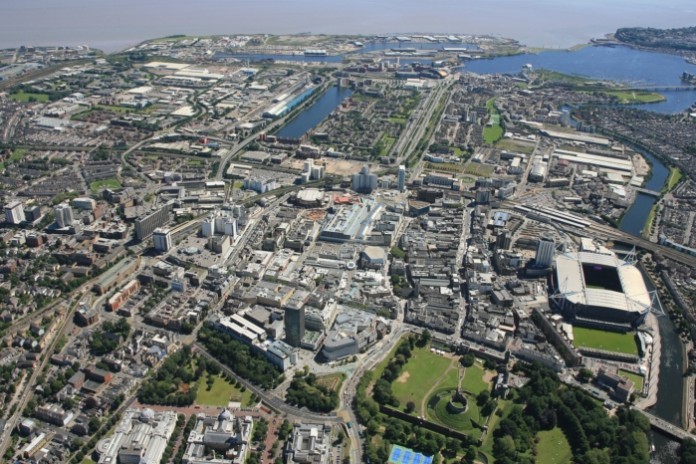Cardiff Council has published its Economic Strategy for the future of the city following public consultation on the Council’s Economic Green Paper. Cardiff has a great story to tell: it is growing faster and creating faster jobs growth than any other core UK city, with burgeoning creative, financial and tech centres.
It is attracting a bigger increase in international visitors and is the UK’s number one city for quality of life. Cardiff also has one of the UK’s most skilled workforces with strengths in finance, tech, advanced manufacturing and the creative industries, along with a growing reputation for world class research.
The Economic Strategy Paper sets out a number of projects to deliver the Council’s aims to build inward investment, further grow the success in the creative, research, semi-conductor, diagnostic and fin-tech sectors, and drive forward the Welsh economy.
Michael Lawley, Chairman of Cooke & Arkwright commented, “The key indicators for Cardiff are strong and bear out the feeling of buoyancy and growth that we have experienced in property transactions over recent years in our Office, Retail, Investment and Residential Land activities especially. The focus of backing major infrastructure projects and key property development schemes will help to deliver continuing strong levels of activity in the coming years on the back of the strong university and leisure base that being a European Capital City brings.”
Priorities within the Spatial Strategy include:
- The Metro Central, which will deliver the new central bus station and modernise Cardiff Central train station
- Central Quay, a new 15 acre development south of the train station
- Dumballs Road, redevelopment of a brownfield site into commercial, office and residential space with cycling and walking routes between the Bay and the city centre
- South Riverside Business Corridor, with improvements to Tudor Street, Lower Cathedral Road and Cowbridge Road East plus low-cost start-up units and cycling and walking routes
- Cardiff Bay, general modernisation works plus a 15,000 seat indoor arena; a new route – The Highline – to link Callaghan Square to the Millennium Centre; an anchor site at Alexandra Head to promote the Bay and Barrage; a ‘Platform for Business’ with opportunities for pop-ups and business start-ups; and a Centre of Contemporary Arts and Innovation to complement the cultural offering
- Cardiff Parkway, a new railway station on the eastern side of the city alongside 1m sq ft of commercial, office and technology space
- Eastern Bay, a requirement to complete the Link Road to unlock potential in east of city, a Development Strategy to bring forward four new development areas providing distribution and environmental technologies, and a Distribution Centre to meet increased demand for distribution centres
- Adamstown / Roath Business Corridor, aiming to make improvements to business frontages and bring empty properties back to use, plus cycling and walking infrastructure.
There are also plans for an Innovation Campus and a Life Sciences Park for the semi-conductor, research and diagnostic sectors; enhanced opportunities for the International Sports Village and a new home for Sport Wales.




















